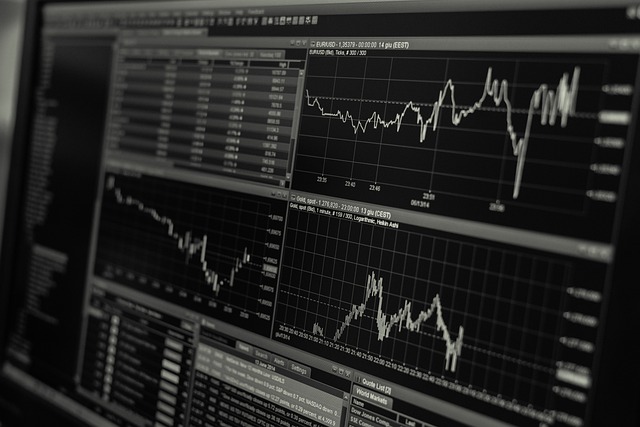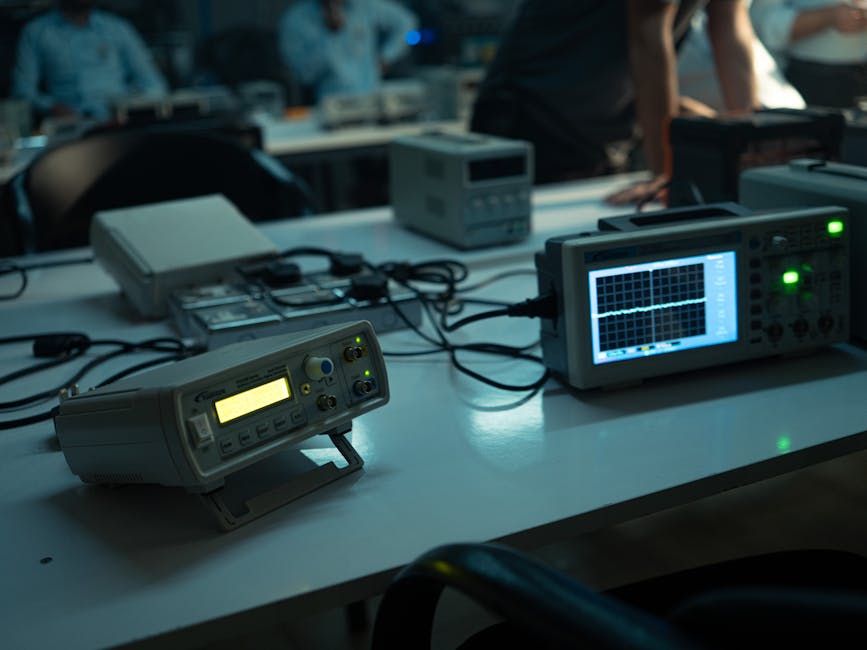Intro: The Shift Toward Automation
Crypto doesn’t clock out. It runs 24/7—volatile, fast-paced, and ruthlessly emotional for the humans involved. That’s a problem. While traders sleep, miss signals, or hesitate during big moves, bots keep going. They don’t second-guess, panic-sell, or chase pumps. That’s why more crypto traders—retail and professional alike—are automating decisions with bots and algorithms.
Speed and emotionless execution give bots an edge. They can scan dozens of pairs, execute trades in milliseconds, and obey logic without getting greedy or scared. Manual trading just can’t keep up with the volume or velocity.
Scalability is the other draw. A single human might handle a couple of trades at a time. A well-coded algorithm can juggle hundreds, all running different strategies around the clock. For serious traders looking to grow, automation isn’t a bonus—it’s basic infrastructure.
As the landscape grows more competitive and complex, handing over repetitive tasks to machines is less about ambition and more about survival. In crypto, if your strategy sleeps, you’re already behind.
What Are Crypto Trading Bots?
Trading bots in the crypto world are automated programs that execute trades on your behalf. Their job is simple: follow a strategy, watch the market 24/7, and act faster than any human can. Bots pull in data—price changes, volume, indicators—and make decisions based on predefined logic.
There are several common types:
- Arbitrage Bots: These scan different exchanges to exploit price differences between them. They’re built for speed and slim margins.
- Market-Making Bots: This type places both buy and sell orders to capture the spread and maintain liquidity. It’s all about small gains done repeatedly.
- Trend-Following Bots: These identify momentum and ride market trends. They buy when prices go up, sell when they dip. Simple idea, but tough to tune.
- Mean Reversion and Scalping Bots: Other variations exist that assume prices snap back to averages or profit from micro-movements across the day.
Bots come in two broad flavors:
- Rules-Based Bots: These follow triggered conditions—like “if RSI < 30, then buy.” Reliable, but rigid.
- Machine Learning Bots: These adapt. They analyze historical and real-time data to predict outcomes. A bit of a black box, but potentially powerful.
Bottom line: bots don’t guess—they follow code. How smart or dumb that code is determines whether they make money or lose it.
How Algorithms Make Decisions
Crypto bots don’t make decisions on gut feelings—they run on data. Lots of it. Price movement, trade volume, volatility levels—these feed the algorithms raw material. But the real backbone is technical indicators, the kind traders have used for decades.
Tools like moving averages smooth out noise to reveal real trends. RSI (Relative Strength Index) helps spot overbought or oversold conditions. MACD (Moving Average Convergence Divergence) tracks momentum shifts. Simple? Yes. Outdated? Not even close. These classics still power the logic behind plenty of top-performing bots.
What matters is how these indicators work together. One data point doesn’t make a decision. Bots combine signals, layering them into rule sets. Think of it like a checklist: If the RSI drops below 30 and the price crosses below the 50-day moving average, then signal a buy. This multi-layered approach reduces noise and false positives.
More advanced systems take it a step further, adjusting strategies based on live market behavior. But whether it’s basic or bleeding-edge, good algorithmic trading starts with clean, relevant data and battle-tested indicators.
For deeper insight, check out The Role of Technical Indicators in Crypto Trading.
Benefits of Bot-Driven Trading
Crypto markets run non-stop. Humans don’t. Bots step in where we can’t—executing trades 24/7 without needing sleep, breaks, or motivation. This alone gives automated strategies a serious edge, especially in a space where missing a market move by an hour can mean the difference between profit and pain.
Bots also don’t panic. They don’t chase green candles or dump at the bottom. Emotional missteps like FOMO or panic selling get wiped out when a bot sticks to pre-set rules. That calm consistency matters, especially in markets this volatile.
Another big plus: backtesting. Before you ever let a strategy touch real money, you can run it through months or years of historical data to see how it would’ve performed. It’s not a crystal ball, but it beats guessing. Backtesting helps weed out bad logic and false confidence before they cost you.
Put simply: bots don’t eliminate risk, but they remove human error and guesswork—two things that have wrecked more portfolios than any bear market ever has.
Risks and Limitations
Bots don’t get tired, but they do mess up—especially when they’re poorly built. A flawed trading algorithm won’t just make a mistake; it’ll repeat that mistake at full speed until your capital’s bleeding. One bug in logic, one miscalibrated trigger, and you’re staring at a red screen when you wake up. That’s the dark side of automation: it scales your strategy, good or bad.
Beyond code, markets themselves can throw curveballs. Sudden news events—like regulatory crackdowns or major exchange hacks—can send prices freefalling in seconds. Bots relying purely on technicals won’t see it coming. Momentum flips, liquidity dries up, and before the model recalibrates, the damage is done.
Then there’s the trap of overfitting. A backtested strategy might look perfect because it’s tailored to past conditions a little too tightly. But real markets evolve. A bot that performed flawlessly last quarter might fail miserably next week.
That’s why serious traders build robust risk management into their systems. Stop losses, position sizing, kill switches—these aren’t optional. You don’t just automate entries and exits; you automate safeguards. Because in algo trading, defense is just as critical as strategy.
Choosing or Building the Right Bot
When it comes to trading bots, you’ve got two lanes: off-the-shelf or custom-built. The ready-made models are plug-and-play—fast to deploy, beginner-friendly, often backed by a support team. But they’re also limited by design—generic strategies, black-box logic, and a sea of users all running the same code.
On the custom side, you have flexibility and raw power. Build your own or hire someone who can. You can define your strategy down to the decimal, integrate only the data you care about, and tweak in real time. The trade-off? Time, technical skill, and the risk of coding mistakes that could nuke your capital.
Whether you buy or build, there are a few non-negotiable features to look for. First, transparency—do you know how the bot executes decisions, or are you flying blind? Next, backtesting—can you see how it would’ve performed on past data? Finally, community reviews. There are plenty of overhyped bots out there; honest feedback from real traders is gold.
For the DIY crowd, open-source frameworks like Gekko, Freqtrade, or Catalyst offer a solid foundation. They’re not polished out of the box, but if you can handle Python and have a clear strategy, these tools give you full control. You own the code, you own the risk—and the upside.
The Future of Algo-Trading in Crypto
AI is no longer just a buzzword—it’s the new brain behind next-gen trading bots. The smartest algorithmic tools in 2024 aren’t just executing orders based on static inputs. They’re learning. Adaptive strategies are watching live market behavior, tweaking parameters, and optimizing on the fly. This means bots that can self-correct during volatility, shift tactics mid-trade, and continuously train based on new data. For serious traders, that’s a big edge.
But with smarter bots comes tighter scrutiny. Regulators are catching up. There’s a growing push to ensure transparency in bot logic and to level the playing field for retail investors. While some regions lag, others are already rolling out frameworks that monitor algorithmic trading activity to prevent abuse and manipulation.
On the upside, retail traders now have access to tools that were once only available to hedge funds and pro desks. Platforms offering plug-and-play AI strategies, drag-and-drop builders, and intuitive dashboards are leveling the field. You don’t need to code to run a real strategy anymore—you just need to understand the logic you’re deploying. DIY doesn’t mean basic. In 2024, it means empowered.
The game’s evolving. Traders who stay on top of these changes—not just the tech, but the rules and accessibility shifts—will be the ones with staying power.
Final Take
Bots are powerful, but they’re not a magic wand. Just because you automate trades doesn’t mean you remove all risk—or responsibility. The smartest traders don’t just plug in a bot and walk away. They treat automation like a tool, not a replacement.
If you don’t understand your strategy, even the best bot won’t save you. You’ve got to test, tweak, and track results. Know the logic your system follows, and pay attention to how it reacts in live conditions. Real-time performance matters more than backtesting brag sheets.
Automation helps you execute with consistency, but mastery is still a human game. Knowing when not to trade matters just as much as when to hit go. Keep learning, stay critical, and never assume the code can think for you.

 Founder & Editor-in-Chief
Founder & Editor-in-Chief
